Animals
0 likes481 views
The document describes the main characteristics of vertebrates and invertebrates. Vertebrates include mammals, birds, reptiles, amphibians and fish. Birds have feathers and wings, fish have gills and fins, reptiles lay eggs and have scales, and amphibians have tails and go through a metamorphosis from tadpole to adult frog. Invertebrates don't have a backbone and can have exoskeletons that are thin, thick, soft or with a shell. Insects have specific body parts like antennae, a head, thorax and abdomen. They go through different life stages that include eggs, caterpillar and chrysalis forms.
1 of 12
Download to read offline
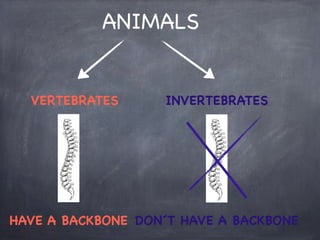


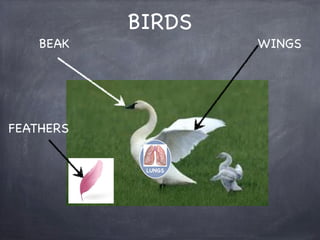
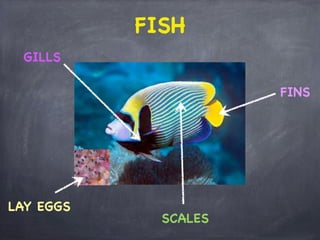
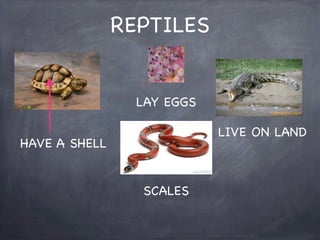
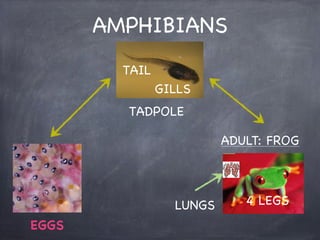
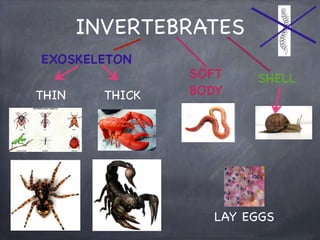
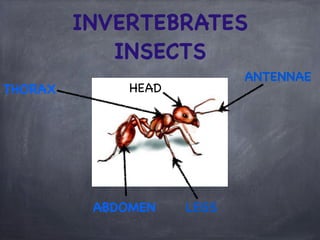
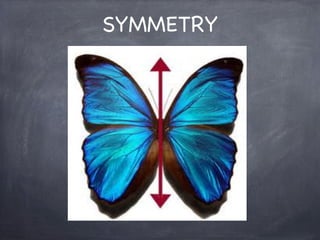
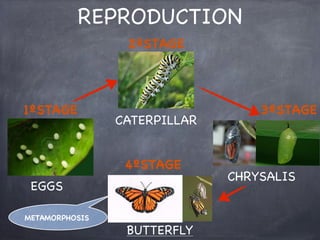
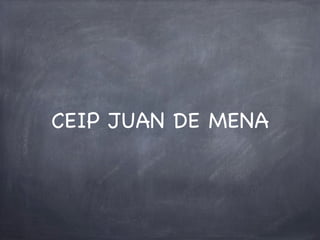
Ad
Recommended
Unit 2 PPT. Year 3b
Unit 2 PPT. Year 3bLoli Garc├Ła
╠²
The document contains summaries of several animals written by students, including:
- Agapornis parrots that are colorful birds from Africa that can talk and make sounds, live in pairs for life, and eat seeds and fruit.
- Dolphins that are social aquatic mammals living in oceans worldwide that help people and can stay underwater for 15 minutes while breathing air.
- Penguins that are birds that cannot fly, live in polar regions, and eat small fish.
- Cats that are carnivorous pets living in homes and hunting small animals.Zebras
Zebrasjheil65
╠²
Plains zebras live in mixed herds of up to 100 individuals and have three distinct types distinguished by their stripe patterns. They graze on tough grasses and underground plant parts and can travel over 100 miles in dry seasons to find food. Plains zebras have a ranked social structure usually consisting of a lead mare, several other females and their young, and a stallion that brings up the rear for protection.Terms for worm lab
Terms for worm labwja10255
╠²
The document provides terms and instructions for a worm lab. It defines anterior as toward the head or front of the worm, and posterior as toward the tail or back. Ventral refers to toward the belly, and dorsal toward the back. The clitellum is a band of glandular tissue where eggs are deposited. Students are instructed to identify the anterior and posterior ends, locate the clitellum, and feel the setae or bristles on the ventral side toward the posterior end. [/SUMMARY]Honey bee
Honey beeMuhammad Talha Hayat
╠²
1. Honey bee queens control the sex of their offspring by determining if eggs are fertilized or not, with unfertilized eggs becoming male drones and fertilized eggs becoming female workers or queens.
2. During mating flights, virgin queen bees mate with multiple male drones in mid-air, storing sperm that will fertilize her eggs for her entire life.
3. The development time for each caste differs, with queens developing in 16 days, workers in 21 days, and drones taking 24 days to reach adulthood.5 S Platypus
5 S Platypuslmollenhauer
╠²
This document provides facts about the duckbill platypus. It details that the platypus lays eggs, has a lifespan of up to 16 years in the wild, and 10-12 years in captivity. Their back legs are more powerful than their front legs. Baby platypuses are born without hair, with small legs and closed eyes, and stay in their mother's burrow for the first six weeks. The platypus lives in underground burrows near water, and eats small fish, worms and bugs both in and out of water. Their webbed feet help them swim fast, and their thick fur allows them to swim underwater. The platypus is found in Australia.Social organization in honey bees
Social organization in honey bees PoojaVishnoi7
╠²
The document discusses the social organization of honey bees, detailing the colony structure, types of bees (queen, drones, workers), and their roles. It also explains communication methods like round and waggle dances, as well as the economic importance of honey bees in agriculture and food production. Honey bees play a crucial role in pollination and produce honey with significant medicinal and nutritional value.Furafer pardalis
Furafer pardalis queraltanglerill
╠²
Furcifer pardalis is a species of chameleon found in Madagascar. It is classified in the kingdom Animalia, phylum Chordata, class Sauropsida, order Squamata, suborder Lacertilia, family Chamaeleonidae, genus Furcifer, and species F. pardalis. As one of the larger chameleon species, male F. pardalis can reach 55cm in length including tail while females grow to 35cm. They live 3-6 years and feed on various insects in their habitat of Madagascar.Butterflies 101
Butterflies 101murrayr96
╠²
The document discusses the life cycle of butterflies which includes four stages: egg, larva (caterpillar), pupa (cocoon), and butterfly. It notes that as adults, butterflies can live from one week to one year depending on the species. A special species, the monarch butterfly, migrates over 1,500 miles from Canada to Mexico each winter to stay warm. Butterflies eat nectar from flowers and help with pollination. There are over 20,000 different kinds of butterflies worldwide. Most butterflies fly between 5 and 12 miles per hour.Duck billed platypus
Duck billed platypusmohamed elebiary
╠²
The duck-billed platypus is a semiaquatic egg-laying mammal found in eastern Australia and Tasmania. It has a duck-like bill, webbed feet, a flat tail, and produces venom from ankle spurs. The platypus lays eggs and feeds its young milk through patches of skin. It lives in burrows near freshwater lakes and rivers, feeding on aquatic invertebrates and larvae. Though once hunted, the platypus is now a protected species.Colony organization in honey bee
Colony organization in honey beeRashmi Ranjan Moharana
╠²
A bee colony consists of a queen, thousands of workers, and hundreds of drones. The queen is the largest bee and lays hundreds of eggs per day. Workers are female bees that take care of the hive through various roles like nursing, building wax cells, and foraging. Drones are male bees whose sole purpose is to mate with virgin queens. Workers and drones are dependent on the queen and workers for food, while the queen relies on workers for food and protection.European Honey Bee
European Honey BeeAnnMarie Jones
╠²
The document provides a detailed description of the anatomy and features of the European honey bee (Apis mellifera), including the structure of its wings, mouthparts, and legs. It highlights the functionality of the proboscis for nectar collection and the specialized compound eyes that allow for acute vision and ultraviolet light perception. Comparisons are made with bumble bees, noting both similarities and differences in their structures.Butterfly
ButterflyRosemarie J. Felix
╠²
Butterflies are day-flying insects known for their colorful wings and complex life cycle, which includes stages as eggs, caterpillars, pupae, and adults. They play significant roles in ecosystems through pollination and sometimes as pests, with varied relationships with host plants and other species. Despite a common belief of short lifespans, adult butterflies can live from a week to nearly a year, depending on the species.Animal powerpoint
Animal powerpointAudrey Colwell
╠²
The document describes the key characteristics of different types of animals. Mammals have fur or hair, breathe with lungs, and feed their young milk. Birds have two legs, most fly with wings, and hatch from eggs. Fish live only in water, breathe with gills, and are born live or hatch from eggs. Reptiles are land animals with scales, have lungs for breathing, and hatch from eggs. Amphibians usually live first in water and later on land, lay eggs, and have moist skin.The Life Cycle Of The Monarch Butterfly
The Life Cycle Of The Monarch Butterflyskailing11
╠²
The document summarizes the four life cycle stages of the monarch butterfly:
1) Eggs are laid on milkweed leaves and hatch into caterpillars after 4 days.
2) Caterpillars eat milkweed leaves for 2 weeks, growing and molting their skin multiple times.
3) Caterpillars then form a chrysalis and undergo metamorphosis for 2 weeks to emerge as adult butterflies.
4) Adult butterflies emerge, their wings dry and harden, and they fly to feed on flower nectar and begin the cycle again.Honey bee History Migratory bee in Pakistan Worker bee Drones
Honey bee History Migratory bee in Pakistan Worker bee DronesMuhammad Naveed Laskani
╠²
This document provides a brief history of honey bees and beekeeping. It discusses the origins of beekeeping studies in the 12th century by Ibn-ul-Awan. Important developments include the first wooden bee hive created by Dzierzon in the 19th century and the invention of the honey extracting machine and smoker. The document then focuses on the history of beekeeping in the Indian subcontinent and Pakistan, including early pioneers. It concludes with descriptions of the different castes within a honey bee colony: the queen, workers, and drones.Life cycle of honey bee
Life cycle of honey bee Abasaheb Garware College, Department of Zoology, Karve road. Pune-4
╠²
Honey bees live in colonies with one queen, thousands of workers, and hundreds of drones. The queen's role is to lay eggs that become either workers or drones. Workers perform all tasks in the colony including feeding larvae, building comb, collecting nectar and pollen. Drones do not work and their sole function is to mate with virgin queens. The life cycle begins with the queen laying an egg, which hatches into a larva and then becomes a pupa before emerging as an adult bee. The development time varies by caste with queens developing the quickest and drones taking the longest.The platypus
The platypusTechnoViking97
╠²
The platypus faces several limiting factors in its environment. [1] It has many predators that it must defend against, so it evolved to secrete venom from spurs on its hind limbs, making it one of the few venomous mammals. [2] As a mammal that lives in an aquatic environment, it developed physical adaptations like webbed feet, fur to stay dry and warm, and a bill to locate food underwater without sight or hearing. [3] These adaptations allow it to thrive despite the challenges of predators and living in the water.Life cycle of honey bees
Life cycle of honey beesMahtab Rashid
╠²
The life cycle of honey bees consists of four stages: egg, larva, pupa, and adult. Eggs are laid by the queen bee and can be fertilized or unfertilized. Fertilized eggs become worker bees or queen bees, while unfertilized eggs become male drones. Larvae emerge from eggs and develop through four molting stages before forming a pupa. Inside the sealed pupa case, the larvae undergoes metamorphosis to emerge as adult bees. The life cycle takes longest for queen bees and shortest for worker bees.Duck billed platypus
Duck billed platypusverduzco2
╠²
The document provides information about the duck-billed platypus, including its range, diet, physical description, breeding habits, unique anatomy, and unusual traits. It notes that the platypus lives in eastern Australia, eats small animals and larvae it finds in rivers and lakes, and has a bill and tail unlike other animals. The document also describes how platypuses breed, build burrows, and males have venomous spurs, as well as other odd facts about their reproduction and lifespan.Amelia & Jessies Cockroaches
Amelia & Jessies Cockroachesrussellst
╠²
Cockroaches are incredibly hardy insects that can survive for long periods without food or water. They have been around for over 350 million years, before dinosaurs existed. Cockroaches can squeeze into tiny spaces, run quickly, and sense movement and vibrations with antennae and leg hairs. There are over 4,000 types of cockroaches worldwide, and New Zealand has a native species called the Kekerengu, known for its strong odor.Animals
AnimalsJonlu85
╠²
This document summarizes different types of animals including vertebrates like mammals, amphibians, fish, birds, and reptiles as well as invertebrates such as worms, molluscs, and arthropods. Key details provided include mammals having fur and feeding babies milk, amphibians having moist skin and living both on land and in water, fish having scales and fins and breathing through gills, and birds having feathers and most being able to fly with exceptions like penguins. Invertebrates are described as lacking a skeleton with some having an exoskeleton, and subgroups like worms having a long soft body, arthropods being the largest group with features like antennas and legs, and mollusMonarch butterflies show
Monarch butterflies showGina Grant
╠²
The monarch butterfly goes through four life stages: egg, caterpillar, pupa, and butterfly. As a caterpillar, it eats swan plant leaves which make it toxic to protect it from predators. It then forms a chrysalis and undergoes metamorphosis to emerge as an adult butterfly. The short-lived butterfly will then lay eggs on swan plants to restart the cycle. The monarch butterfly is known for its long annual migration patterns in North America, while in New Zealand they do not migrate far from where they hatch.Kaylin
Kaylindarlajeffery
╠²
A small mammal that lives along rivers and streams is described, measuring 10-14 inches in length. It eats insects, bird eggs, and young birds. Its average lifespan is 15 years.Elephants
Elephantsomar salim
╠²
This document discusses elephants and some of their key physical characteristics and behaviors such as hugging with their trunks. It also lists some threats elephants face including deforestation, ivory trade, drought, and disease which are reducing elephant populations in tropical forests and savannah habitats.The Tale of a Queen Bee - the CCD story from a hive perspective
The Tale of a Queen Bee - the CCD story from a hive perspectiveBee Healthy Farms
╠²
The document narrates the life cycle and social structure of a honeybee colony, focusing on the queen bee's role and the intricate tasks of worker bees. It highlights the harmony of nature, the challenges faced by honeybees such as Colony Collapse Disorder, and the impact of pesticides on their populations. The story emphasizes the importance of bees in ecosystems and the consequences of human agricultural practices on their survival.Wolf Spiders Daniel W
Wolf Spiders Daniel Wmm17
╠²
Wolf spiders are large spiders that live in underground burrows with dirt doors covered in web. They have grey-brown coloring with stripes on their stomachs and eight eyes. Wolf spiders eat insects like flies, mosquitoes, and crickets. They catch prey by jumping out of their burrows and stunning insects. Females carry egg sacs under their stomachs and care for hatchlings for a few days. Wolf spiders live for about two years and will only bite when annoyed, causing swelling and itching.Mammals,birds and fish (1)
Mammals,birds and fish (1)BilingualSalesianos
╠²
This document discusses characteristics of mammals, birds, and fish. Mammals are born from their mother's womb, drink milk, and humans are mammals. Birds are born from eggs, covered with feathers, and can fly. Fish are also born from eggs, covered with scales, and have fins.Hymenoptera
HymenopteraInternational School of the Sacred Heart
╠²
The document discusses the Western honey bee (Apis mellifera). It notes that honey bees are native to Europe, Asia, and Africa, but have been introduced worldwide. Honey bees live in highly organized colonies with different roles for queens, drones, and worker females. There are only 7 recognized species of honey bees, which is a small fraction of over 20,000 known bee species. Honey bees are often maintained and their honey harvested by beekeepers.More Related Content
What's hot (20)
Duck billed platypus
Duck billed platypusmohamed elebiary
╠²
The duck-billed platypus is a semiaquatic egg-laying mammal found in eastern Australia and Tasmania. It has a duck-like bill, webbed feet, a flat tail, and produces venom from ankle spurs. The platypus lays eggs and feeds its young milk through patches of skin. It lives in burrows near freshwater lakes and rivers, feeding on aquatic invertebrates and larvae. Though once hunted, the platypus is now a protected species.Colony organization in honey bee
Colony organization in honey beeRashmi Ranjan Moharana
╠²
A bee colony consists of a queen, thousands of workers, and hundreds of drones. The queen is the largest bee and lays hundreds of eggs per day. Workers are female bees that take care of the hive through various roles like nursing, building wax cells, and foraging. Drones are male bees whose sole purpose is to mate with virgin queens. Workers and drones are dependent on the queen and workers for food, while the queen relies on workers for food and protection.European Honey Bee
European Honey BeeAnnMarie Jones
╠²
The document provides a detailed description of the anatomy and features of the European honey bee (Apis mellifera), including the structure of its wings, mouthparts, and legs. It highlights the functionality of the proboscis for nectar collection and the specialized compound eyes that allow for acute vision and ultraviolet light perception. Comparisons are made with bumble bees, noting both similarities and differences in their structures.Butterfly
ButterflyRosemarie J. Felix
╠²
Butterflies are day-flying insects known for their colorful wings and complex life cycle, which includes stages as eggs, caterpillars, pupae, and adults. They play significant roles in ecosystems through pollination and sometimes as pests, with varied relationships with host plants and other species. Despite a common belief of short lifespans, adult butterflies can live from a week to nearly a year, depending on the species.Animal powerpoint
Animal powerpointAudrey Colwell
╠²
The document describes the key characteristics of different types of animals. Mammals have fur or hair, breathe with lungs, and feed their young milk. Birds have two legs, most fly with wings, and hatch from eggs. Fish live only in water, breathe with gills, and are born live or hatch from eggs. Reptiles are land animals with scales, have lungs for breathing, and hatch from eggs. Amphibians usually live first in water and later on land, lay eggs, and have moist skin.The Life Cycle Of The Monarch Butterfly
The Life Cycle Of The Monarch Butterflyskailing11
╠²
The document summarizes the four life cycle stages of the monarch butterfly:
1) Eggs are laid on milkweed leaves and hatch into caterpillars after 4 days.
2) Caterpillars eat milkweed leaves for 2 weeks, growing and molting their skin multiple times.
3) Caterpillars then form a chrysalis and undergo metamorphosis for 2 weeks to emerge as adult butterflies.
4) Adult butterflies emerge, their wings dry and harden, and they fly to feed on flower nectar and begin the cycle again.Honey bee History Migratory bee in Pakistan Worker bee Drones
Honey bee History Migratory bee in Pakistan Worker bee DronesMuhammad Naveed Laskani
╠²
This document provides a brief history of honey bees and beekeeping. It discusses the origins of beekeeping studies in the 12th century by Ibn-ul-Awan. Important developments include the first wooden bee hive created by Dzierzon in the 19th century and the invention of the honey extracting machine and smoker. The document then focuses on the history of beekeeping in the Indian subcontinent and Pakistan, including early pioneers. It concludes with descriptions of the different castes within a honey bee colony: the queen, workers, and drones.Life cycle of honey bee
Life cycle of honey bee Abasaheb Garware College, Department of Zoology, Karve road. Pune-4
╠²
Honey bees live in colonies with one queen, thousands of workers, and hundreds of drones. The queen's role is to lay eggs that become either workers or drones. Workers perform all tasks in the colony including feeding larvae, building comb, collecting nectar and pollen. Drones do not work and their sole function is to mate with virgin queens. The life cycle begins with the queen laying an egg, which hatches into a larva and then becomes a pupa before emerging as an adult bee. The development time varies by caste with queens developing the quickest and drones taking the longest.The platypus
The platypusTechnoViking97
╠²
The platypus faces several limiting factors in its environment. [1] It has many predators that it must defend against, so it evolved to secrete venom from spurs on its hind limbs, making it one of the few venomous mammals. [2] As a mammal that lives in an aquatic environment, it developed physical adaptations like webbed feet, fur to stay dry and warm, and a bill to locate food underwater without sight or hearing. [3] These adaptations allow it to thrive despite the challenges of predators and living in the water.Life cycle of honey bees
Life cycle of honey beesMahtab Rashid
╠²
The life cycle of honey bees consists of four stages: egg, larva, pupa, and adult. Eggs are laid by the queen bee and can be fertilized or unfertilized. Fertilized eggs become worker bees or queen bees, while unfertilized eggs become male drones. Larvae emerge from eggs and develop through four molting stages before forming a pupa. Inside the sealed pupa case, the larvae undergoes metamorphosis to emerge as adult bees. The life cycle takes longest for queen bees and shortest for worker bees.Duck billed platypus
Duck billed platypusverduzco2
╠²
The document provides information about the duck-billed platypus, including its range, diet, physical description, breeding habits, unique anatomy, and unusual traits. It notes that the platypus lives in eastern Australia, eats small animals and larvae it finds in rivers and lakes, and has a bill and tail unlike other animals. The document also describes how platypuses breed, build burrows, and males have venomous spurs, as well as other odd facts about their reproduction and lifespan.Amelia & Jessies Cockroaches
Amelia & Jessies Cockroachesrussellst
╠²
Cockroaches are incredibly hardy insects that can survive for long periods without food or water. They have been around for over 350 million years, before dinosaurs existed. Cockroaches can squeeze into tiny spaces, run quickly, and sense movement and vibrations with antennae and leg hairs. There are over 4,000 types of cockroaches worldwide, and New Zealand has a native species called the Kekerengu, known for its strong odor.Animals
AnimalsJonlu85
╠²
This document summarizes different types of animals including vertebrates like mammals, amphibians, fish, birds, and reptiles as well as invertebrates such as worms, molluscs, and arthropods. Key details provided include mammals having fur and feeding babies milk, amphibians having moist skin and living both on land and in water, fish having scales and fins and breathing through gills, and birds having feathers and most being able to fly with exceptions like penguins. Invertebrates are described as lacking a skeleton with some having an exoskeleton, and subgroups like worms having a long soft body, arthropods being the largest group with features like antennas and legs, and mollusMonarch butterflies show
Monarch butterflies showGina Grant
╠²
The monarch butterfly goes through four life stages: egg, caterpillar, pupa, and butterfly. As a caterpillar, it eats swan plant leaves which make it toxic to protect it from predators. It then forms a chrysalis and undergoes metamorphosis to emerge as an adult butterfly. The short-lived butterfly will then lay eggs on swan plants to restart the cycle. The monarch butterfly is known for its long annual migration patterns in North America, while in New Zealand they do not migrate far from where they hatch.Kaylin
Kaylindarlajeffery
╠²
A small mammal that lives along rivers and streams is described, measuring 10-14 inches in length. It eats insects, bird eggs, and young birds. Its average lifespan is 15 years.Elephants
Elephantsomar salim
╠²
This document discusses elephants and some of their key physical characteristics and behaviors such as hugging with their trunks. It also lists some threats elephants face including deforestation, ivory trade, drought, and disease which are reducing elephant populations in tropical forests and savannah habitats.The Tale of a Queen Bee - the CCD story from a hive perspective
The Tale of a Queen Bee - the CCD story from a hive perspectiveBee Healthy Farms
╠²
The document narrates the life cycle and social structure of a honeybee colony, focusing on the queen bee's role and the intricate tasks of worker bees. It highlights the harmony of nature, the challenges faced by honeybees such as Colony Collapse Disorder, and the impact of pesticides on their populations. The story emphasizes the importance of bees in ecosystems and the consequences of human agricultural practices on their survival.Wolf Spiders Daniel W
Wolf Spiders Daniel Wmm17
╠²
Wolf spiders are large spiders that live in underground burrows with dirt doors covered in web. They have grey-brown coloring with stripes on their stomachs and eight eyes. Wolf spiders eat insects like flies, mosquitoes, and crickets. They catch prey by jumping out of their burrows and stunning insects. Females carry egg sacs under their stomachs and care for hatchlings for a few days. Wolf spiders live for about two years and will only bite when annoyed, causing swelling and itching.Mammals,birds and fish (1)
Mammals,birds and fish (1)BilingualSalesianos
╠²
This document discusses characteristics of mammals, birds, and fish. Mammals are born from their mother's womb, drink milk, and humans are mammals. Birds are born from eggs, covered with feathers, and can fly. Fish are also born from eggs, covered with scales, and have fins.Hymenoptera
HymenopteraInternational School of the Sacred Heart
╠²
The document discusses the Western honey bee (Apis mellifera). It notes that honey bees are native to Europe, Asia, and Africa, but have been introduced worldwide. Honey bees live in highly organized colonies with different roles for queens, drones, and worker females. There are only 7 recognized species of honey bees, which is a small fraction of over 20,000 known bee species. Honey bees are often maintained and their honey harvested by beekeepers.More from Troylo23 (20)
Insert healthy life? Troylo23
╠²
El documento propone usar la tecnolog├Ła computacional y rob├│tica para mejorar el bienestar social y la inteligencia emocional de los estudiantes, al mismo tiempo que se trabaja en el razonamiento matem├Ītico. Los estudiantes se convertir├Łan en mentores de su propio aprendizaje y lo ofrecer├Łan a la comunidad educativa y local a trav├®s de una asociaci├│n de Alzheimer.Lectura comprensiva. la vida es suen╠āo.Troylo23
╠²
El pr├Łncipe Segismundo de Polonia ha vivido preso en una torre desde su nacimiento debido a un hor├│scopo que predijo que destronar├Ła a su padre el rey Basilio y traer├Ła desgracias al reino. Cuando Segismundo alcanza la mayoridad, su padre lo lleva al palacio bajo los efectos de las drogas para ponerlo a prueba. Segismundo se comporta como un salvaje y su padre decide devolverlo a su celda, convencido de que el hor├│scopo se ha cumplido. Segismundo pronunciaLa vida es sue├▒oTroylo23
╠²
El documento narra la historia de Segismundo, un pr├Łncipe encerrado en una torre por orden de su padre el rey Basilio. Segismundo sue├▒a con escapar de su encierro y gobernar el reino, mientras reflexiona sobre la naturaleza ilusoria de la vida y c├│mo todos, ricos y pobres, sue├▒an con su posici├│n en la vida. Al final, Segismundo concluye que toda la vida es un sue├▒o y que los sue├▒os mismos no son m├Īs que sue├▒os.English grammar Troylo23
╠²
Este documento presenta las palabras interrogativas (preguntas) en ingl├®s y sus posibles respuestas. Proporciona ejemplos de preguntas comunes que comienzan con palabras como qu├®, d├│nde, cu├Īndo, c├│mo, cu├Īntos, cu├Īnto, por qu├®, qui├®n y cu├Īles, junto con posibles respuestas a cada una. Tambi├®n explica c├│mo formular preguntas con verbos como ser, estar y poder y la estructura b├Īsica de las respuestas afirmativas y negativas.Science notebook for summer good
Science notebook for summer goodTroylo23
╠²
This document outlines the 12 units covered in a 3rd grade science summer notebook. The units include: living and non-living things; senses; movement; animals; plants; habitats; water and air on Earth; landscapes; the top layer of Earth; transports and communication; work; and where we live. Each unit provides vocabulary terms and concepts to be covered for that topic.Unit12 places
Unit12 placesTroylo23
╠²
This document discusses various places and features found in cities and towns, including historic centers, outskirts, underground services like water pipes and sewer pipes, and above-ground services such as libraries, hospitals, and telephone boxes. It also mentions maps, symbols, cardinal directions, and other location indicators.Unit11 work
Unit11 workTroylo23
╠²
The document outlines the three main economic sectors - primary, secondary and tertiary - and examples of industries within each. The primary sector includes livestock farming, arable farming and fishing. Arable farming can involve dry or irrigated crops, while livestock farming includes cattle, sheep, pig and poultry. The secondary sector contains mining and industrial work. The tertiary sector is made up of administration, healthcare, education, tourism, transport and retail.Unit10 transportand communication
Unit10 transportand communicationTroylo23
╠²
This document lists and categorizes different forms of transportation on land, air and water, including cars, trains, planes, ships, and helicopters. It also organizes various methods of communication into personal forms like telephone and television, and mass forms such as postal service, radio, and internet. Private transportation includes vans while public transportation consists of buses, ferries, and cargo ships.Unit 9 the top layer in the earth
Unit 9 the top layer in the earthTroylo23
╠²
This document discusses different types of soil layers including topsoil, subsoil, and bedrock. It describes components of soil like minerals, humus, rocks, and how animals and decomposers interact with soil and plants. Different types of rocks that make up soils are also mentioned.Unit 8 landscapes
Unit 8 landscapesTroylo23
╠²
This document discusses different types of landscapes including mountains, plains, valleys, hills, plateaus, coastal landscapes like cliffs, bays, beaches, and slopes. It also discusses parts of mountains like summits and foothills. Rivers are mentioned as having sources, and parts like the upper, middle, and lower courses, as well as meanders, tributaries, and mouths.Unit 7 water and earth
Unit 7 water and earthTroylo23
╠²
The document discusses the states and properties of water and air. Water can exist as a solid, liquid, or gas, and takes the form of ice, water, or vapor. It has no color, taste, or smell. Air is a mixture of gases including oxygen and nitrogen. Air masses can move as calm breezes, strong gales, or violent hurricanes. The water cycle involves evaporation of water from oceans, condensation into clouds, and precipitation back as rain, snow, or hail.Unit 6 habitats
Unit 6 habitatsTroylo23
╠²
This document discusses different land and water habitats including saltwater, freshwater, deserts, artic regions, savannahs, tropical rainforests, and temperate forests. It also mentions topics like the conditions in these habitats, populations, ecosystems, communities, food chains, producers, consumers, decomposers.Unit 5 plants
Unit 5 plantsTroylo23
╠²
The document discusses classifying different types of plants including trees, bushes, grasses, and flowers. It identifies various plant parts such as roots, stems, leaves, flowers, and seeds. The cycle of a plant is outlined as seeds germinating, roots and leaves growing on stems, flowers forming, and the plant eventually dying.Unit 4 animals
Unit 4 animalsTroylo23
╠²
The document discusses different types of animals including invertebrates which lack a backbone, vertebrates which have a backbone, and different types of diets including herbivores which eat plants, carnivores which eat other animals, and omnivores which eat both plants and animals. It also covers viviparous animals like mammals that give live birth and oviparous animals that lay eggs, as well as different external coverings animals can have including skin, fur, feathers, and scales.Unit 3 we can move
Unit 3 we can moveTroylo23
╠²
The document discusses the human locomotor system, including bones, joints, and muscles. It describes bones as rigid and hard, with different types including short, flat, and long bones. Joints are classified as flexible, semi-flexible, or fixed. Muscles are soft and divided into voluntary and involuntary muscles. The locomotor system allows movement through the interaction of bones, joints, and muscles in the body.Unit 3 we can move
Unit 3 we can moveTroylo23
╠²
The document discusses the human locomotor system, including bones, joints, and muscles. It describes bones as rigid and hard, with different types including short, flat, and long bones. Joints are classified as flexible, semi-flexible, or fixed. Muscles are soft and divided into voluntary and involuntary muscles. The locomotor system allows movement through the interaction of bones, joints, and muscles in the body.Unitt 2 the senses
Unitt 2 the sensesTroylo23
╠²
This document discusses the five human senses - sight, hearing, smell, taste, and touch - and the organs associated with each sense: eyes for sight, ears for hearing, nose for smell, tongue for taste, and skin for touch. It also mentions that nerves send sensory information to the brain.Ad
Animals
- 1. ANIMALS VERTEBRATES INVERTEBRATES HAVE A BACKBONE DON┬┤T HAVE A BACKBONE
- 6. REPTILES LAY EGGS LIVE ON LAND HAVE A SHELL SCALES
- 10. SYMMETRY
- 11. REPRODUCTION 2┬║STAGE 1┬║STAGE CATERPILLAR 4┬║STAGE EGGS METAMORPHOSIS BUTTERFLY 3┬║STAGE CHRYSALIS
- 12. CEIP JUAN DE MENA